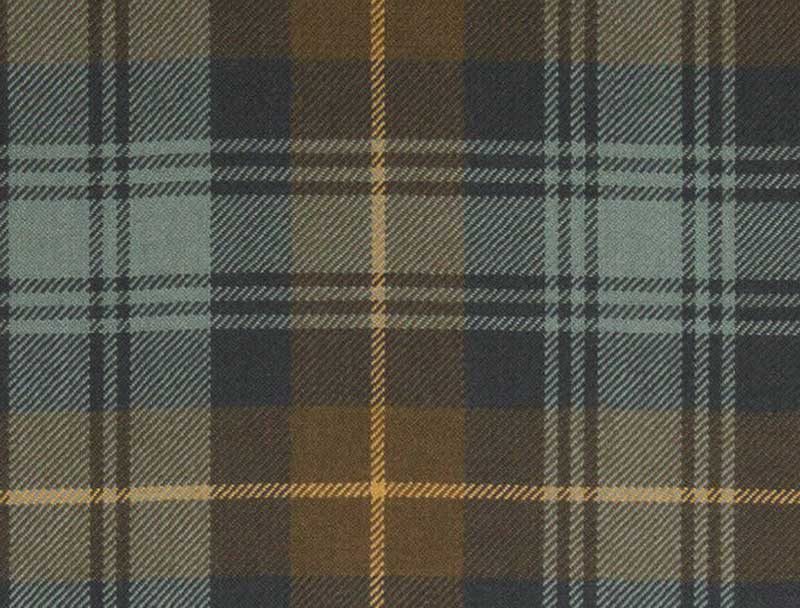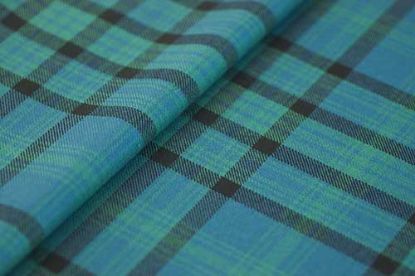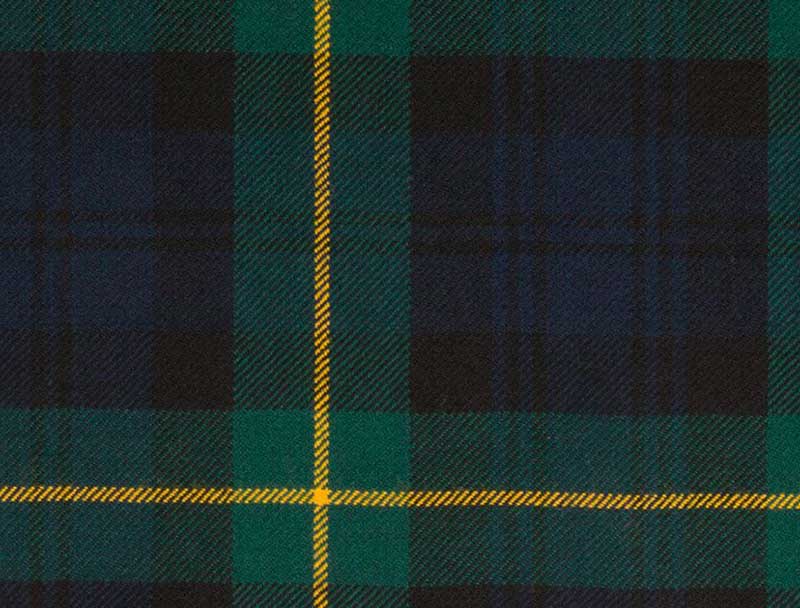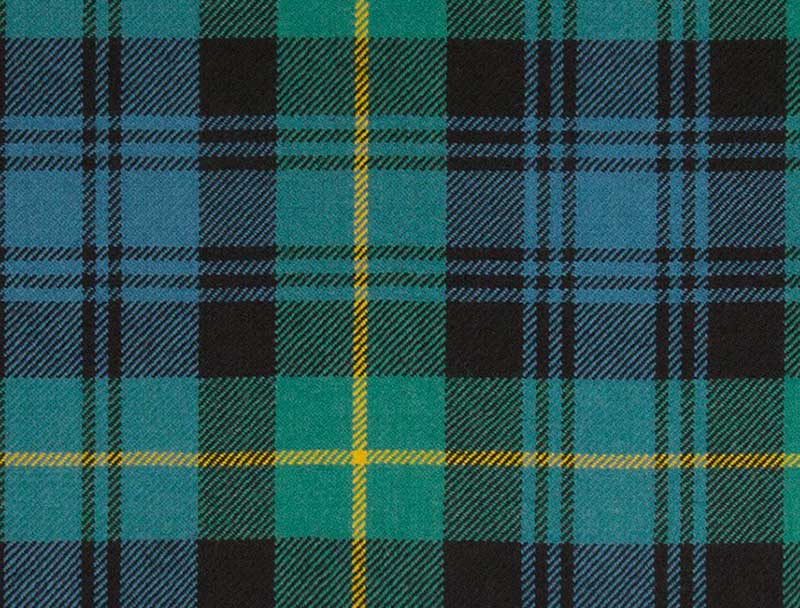Scottish tartan weavers distinguish between colour and shade when crafting a tartan. In traditional tartan weaving, a limited set of colours is used, but different shades of the same colour can be applied. This technique contributes to the variety and appeal of tartan designs. For example, the Modern, Ancient and Weathered versions of the lightweight Gordon tartan (shown below) are identical in pattern and size; each just uses different shades of the accepted colours.
Gordon Modern Tartan
Gordon Ancient Tartan
Gordon Weathered Tartan

Additionally, each weaving mill has a signature set of colourways for their textiles. One mill’s green may vary significantly from another’s. So, if you are looking for something to precisely match your kilt or another garment, it’s crucial to try and identify the weaver first. Simply ordering a product with the same name may well cause disappointment when it doesn’t match as expected. Ordering woven tartan fabric samples, rather than relying on online images, is by far the best way to make sure that your tartan will be a good match.
Every tartan has a broad range of shades specified as “correct”, and as long as the pattern adheres to the standard, the sett size and exact shade used are less critical. For example, a MacDonald Clan modern tartan, woven by Lochcarron, will feature different shades of colours from a cloth produced by Strathmore, House of Edgar, or Ingles Buchan. At times, differences between the various mills are barely perceptible, and at other times, the difference is quite marked. Tartans from the same mill can vary in scale and shade. At first glance, a 16 oz. heavyweight large-scale tartan may appear quite different from a 10 oz. lightweight, but both are accurate representations of the original design.
Tartan Terms
Tartan descriptions can be confusing for beginners due to the numerous adjectives used, such as modern, ancient, repro, weathered, and muted. These terms do not refer to the age of the tartan, but rather the colour scheme used in its creation.
Modern
Modern colours refer to the introduction of new chemical dyes in the 1850s, which allowed for brighter and more intense shades. Some darker shades created by these dyes are nearly black, making it difficult to distinguish between dark green or blue and black. This can obscure the weaver’s colour choice, making subtle shades harder to distinguish. This may well explain why “ancient” colourways have become increasingly popular.
Ancient
Ancient colours have less vibrant shades and these often show off the pattern to better effect. This palette became more popular in the 1950s and 1960s. The ancient palette tries to mimic the colours created by natural dyes, so reds, for example, may appear less scarlet and more orange. Sometimes old dyes are referred to as vegetable dyes, which isn’t strictly accurate. Many of them were indeed made from plants and flowers, but many also came from minerals or animals.
Weathered
Weathered colours imitate the appearance of a tartan faded by exposure to elements like the sun, rain, wind, snow, frost, and heat. The colours become more “earthy,” with greens turning khaki brown and navy blues changing to muted slate greys.
Muted
Similar to weathered colours, muted shades mimic how a tartan would look when exposed to the Scottish elements.
Reproduction
These colours are recreations of how “found” tartans would have looked like when newly woven. This effect can be seen the Glen Affric and Ulster Tartans, which were found preserved in peat bogs and dated to around 500 years old.
Old
There are a small number of tartan designs which have been found to be older than the pattern normally worn in modern times by the family or clan. The adjective “old” is sometimes used in these cases, such as Fraser Old, a sett that is actually older than other Fraser tartans.
If there is no adjective describing the colour palette at all, this normally implies the default of modern colours.
We hope you found this exploration of colours and dyes in Scottish tartans informative! For all your tartan needs and to discover your perfect match, visit our tartan viewer.


























